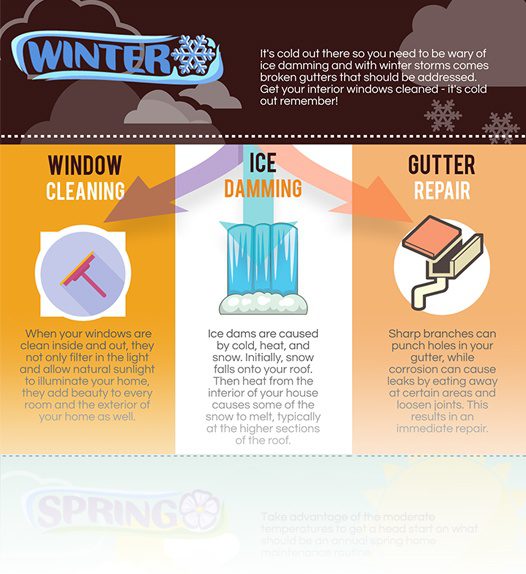One Of The Most Efficient Stress Cleaning Practices For Each Surface Area Classification
One Of The Most Efficient Stress Cleaning Practices For Each Surface Area Classification
Blog Article
Short Article Author-Bryant Mosley
When it pertains to push cleaning, the technique you pick can make all the distinction in achieving a tidy, streak-free coating. You could find that hard surface areas, like concrete, require a different strategy than softer materials, such as timber or vinyl. It's necessary to adjust your methods to the surface type to avoid damages while maximizing cleaning performance. So, what are the most effective techniques for each surface, and exactly how can you guarantee you're making use of the best setups and devices for the job? Allow's explore what https://gregoryszgnt.nizarblog.com/32694470/seasonal-pressure-washing-determining-the-right-minutes-and-reasons-for-outside-cleansing require to understand to get the most effective outcomes.
Difficult Surfaces
When it comes to press cleaning difficult surface areas, preparation is crucial. Prior to you also think about pulling out the stress washing machine, take the time to get rid of the area of any particles, furnishings, or obstacles. You do not want anything getting in your method or possibly harmful your equipment.
Next, examine click this link for any kind of fractures or damage; this will certainly assist you figure out the right approach and stress settings.
Once you have actually prepared the area, it's vital to pick the appropriate nozzle. For hard surface areas like concrete or brick, a narrow nozzle (15 or 25 levels) functions best to provide a concentrated stream of water that can properly remove crud and spots. Always begin at a distance and slowly relocate better to prevent any kind of surface area damage.
As you start cleaning, keep the stick transferring to prevent touches and over-saturation. It's likewise useful to function from the top down, enabling dust and debris to wash away naturally.
Finally, remember to rinse the surface extensively after cleansing to get rid of any remaining detergent. With these methods, you'll attain a tidy and refreshed look on all your hard surfaces.
Soft Surfaces
Stress cleaning soft surfaces calls for a gentler technique to safeguard them from damage. Whether you're cleaning your deck, outdoor patio furniture, or house siding, using way too much pressure can cause dents, scrapes, and even irreversible harm.
Beginning by selecting a low-pressure nozzle, ideally a 25-degree or broader spray pattern, to distribute the water extra delicately.
Prior to simply click the following site start, it's vital to pre-treat any type of stains with a suitable cleaning option. This step enables the cleaner to permeate the dirt and crud, making it easier to get rid of without scrubbing too hard.
Always use the option from all-time low up to protect against streaking.
When you begin stress cleaning, maintain a distance of a minimum of 12 to 18 inches from the surface area. Relocate your stick in a sweeping movement, keeping it parallel to the surface area to prevent focused stress on one spot.
Rinse the area thoroughly after cleansing to get rid of any type of residual cleaner.
Finally, examine the surface for any kind of missed spots and repeat the process if required. By complying with these steps, you can efficiently tidy soft surface areas while protecting their integrity and appearance.
Specialized Surfaces
Cleaning up soft surfaces calls for care, however specialized surfaces demand even more interest to detail. When you tackle these surfaces, like fragile timber, stained concrete, or particular sorts of siding, using the ideal pressure washing techniques is essential to avoid damages.
Initially, assess the product. As an example, treated wood can frequently hold up against moderate stress, yet softer timbers like cedar may call for a reduced setting. Constantly start with the lowest pressure and gradually enhance if essential.
For tarnished concrete, use a fan spray nozzle and keep a regular range to prevent etching the surface.
When managing surface areas like plastic house siding or painted surfaces, a wide spray pattern helps disperse the pressure uniformly, safeguarding the finish.
It's additionally important to use cleaning agents particularly made for specialty surfaces. They can enhance cleansing without compromising the material.
Rinse extensively after washing to remove any kind of deposit, as it can result in staining or deterioration gradually.
Verdict
In conclusion, mastering stress washing techniques for various surfaces can make all the difference in your cleaning results. For hard surface areas, stay with slim nozzles and a top-to-bottom technique, while soft surfaces need a gentler touch with larger nozzles. Don't neglect to pre-treat stains and wash extensively to prevent residue. By adapting your techniques to every material, you'll not only attain a cleaner coating however additionally safeguard the integrity of your surfaces. Pleased cleansing!
